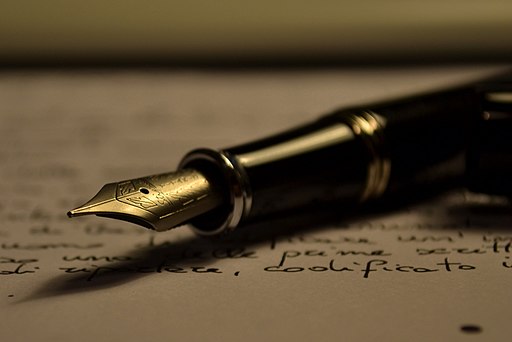If only there was a button. Not a Big Red Button, but a tastefully proportioned button in a calming shade of blue. A button which, when pressed, would magically rid your home and life of all the extraneous unnecessary complications which make it so stressful. A simplifying button.

Sadly, life is not like that. There Is No Spoon Button. Simplifying is a process, usually a slow process, and sometimes a difficult one. But do not be discouraged. Lasting, healthy change is generally incremental.
If I had a chocolate cookie for every time I’ve done a big clean-up and sworn I would keep it that way, I would be a happy woman. I would be even happier if I had actually ever managed to do it. My temperament is suited to big, sweeping changes – but they don’t last.
I lurch from extreme to extreme. From “is that a crumb you just dropped on your place-mat? Horror!” to “eh, just drop it on the floor, it’ll get cleaned up sometime.”

Consistency is – um, well, I know what it means. And I can spell it. That’s about as far as my abilities extend in that direction. (It has just occurred to me that I might not be very easy to live with.)
Sometimes, almost despite myself, I make a small change. And it lasts. And slowly (oh so slowly!) the small changes are starting to add up. Thinking about it, I realize most of my lasting changes lie in the area where simplicity and eco-friendliness overlap. And most of them are incremental.
Lip balm, for example. I was vaguely dissatisfied with the ‘classic’ one I was using (ingredients including octyl methoxycinnamate, oxybenzone, pigments & hydroxybenzoates, as well as an unspecified “emollient base”) for some years before I realized that the more I used, the more I seemed to need to use, and went looking for a new one.

I soon found a beeswax-based one – which also included octyl methoxycinnamate (again), benzophenone 3 (aka oxybenzone, again) and butyl methoxydibenzoylmethane! And peppermint oil, which made my lips tingle, which is not a sensation I enjoy. (Allergic reaction? Oxygen deprivation? No, lip balm.)
Finally I found one which has a grand total of three ingredients: sweet almond oil, beeswax and plant-based cetearyl alcohol. That’s it. No colours, no flavours, no polysyllabic anonymities. (Ecostore beeswax lip balm, if you’re interested. It also comes in a peppermint version, if you like the allergic-reaction-sensation.)
The downside of not having all the polysyllabic chemicals mentioned above is that this lip balm does not double as a sunscreen. Another reason to love the hat: eco-friendly, skin-friendly, reusable and (if chosen carefully) flattering.

I’ve also started using a botanical conditioner, having heard that it’s much better for curly hair than the usual sort. Being a compulsive reader, I frequently read the backs of my old shampoo and conditioner bottles, and can now fluently pronounce “methylisothiazolinone” and “methylchloroisothiazolinone” – both of which, I discovered when I worked in a import/export office, are classified as Dangerous Goods.
This means they are subject to international laws regarding labelling, transport & handling. Until they’re put into your shampoo and conditioner, because they’re only used in minute quantities. Which is just as well, under the circumstances.
The botanical conditioner smells delicious. The only downside is that now my old shampoo smells like window-cleaner. Possibly because the first ingredient (after water) is ammonium lauryl sulphate. My hair seems happy with the change. Sadly, the delicious smell doesn’t seem to linger after rinsing, but on the plus side, I don’t smell like Mrs Bennet’s smelling salts any more either.

Another area I’ve made incremental change in is the area of writing instruments: an important one for me, being a writer who frequently works in longhand. I used to write with the ubiquitous blue ballpoint pens – which somehow manage to be ubiquitous without you being able to find one when you need it – but on completion of my undergraduate degree, a friend bought me a fountain pen.
It was a Parker, with a cartridge system – rather like having a disposable pen section inside a reusable pen. I used that poor pen to death.
And then I was given a bundle of old fountain pens. Some of them were past saving, but that bundle included the Faber-Castell pen I wrote my first draft with (all 158,840 words), and a Platignum short-hand pen which I also use. The Faber-Castell is a piston-filler (are there any words in the English language more beautiful than “piston-filling fountain pen”?) and the Platignum has a rubber bulb arrangement. Both of them use bottled ink. Both work perfectly, and they’re probably both older than I am.

And here’s the thing. Having decided on purple ink for Tsifira‘s thematic colour, I bought a 30mL bottle of Diamine’s Majestic Purple ink. 158,840 words later (not counting innumerable notes etc.) the bottle is still over half full. All for less than fifteen dollars, including the cost of having it posted to my house. Good value? I think so.
And as a left-handed writer, I was surprised to find that I can write for three hours with a flowing fountain pen and end up with less ink on my hand than I did with a ball-point. By the end of a 3 hour exam, I’d have a crescent of dark blue along the side of my hand from the tarry, slow-drying ballpoint ink. Three hours of a morning with my purple-filled Faber-Castell, and there’s not a mark on me.
Lip balm, hair care, everyday writing – these are small changes, and for the most part, made step-by-step. But it all adds up.
What small changes have you made? What are you thinking about changing next?







